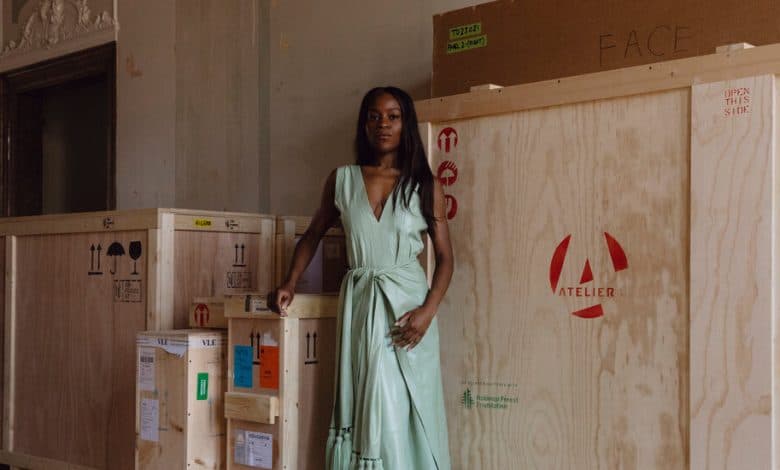In the Nigeria Pavilion, Criticism Meets Optimism

People in Lagos, Nigeria’s largest city, are hardly shy. The stereotype runs toward boisterousness, worn as a point of pride. But when the artist and poet Precious Okoyomon recorded interviews with some 60 city residents in January for an art project, the unusual questions — like “Who was responsible for the suffering of your mother?” — proved disarming.
Okoyomon is based in Brooklyn, but lived in Lagos as a child and still visits there frequently. The artist was collecting material for a sonic and sculptural installation that will be presented in the Nigeria Pavilion at this year’s Venice Biennale. The event, one of the art world’s most important, opens for previews next week and to the public on April 20.
Okoyomon’s steel-framed structure, erected in a courtyard, imagines a kind of radio tower, decked with bells and colonized by creeping vines. Motion sensors on the tower activate a soundtrack: It will play in the courtyard and also online, for anyone to tune in. It mixes poems by Okoyomon with music and passages from those interviews, whose respondents range from fellow artists to “strangers, someone’s cook, someone’s auntie,” Okoyomon said.
After some wary first reactions to the intimate 12-question protocol (adapted from another poet, Bhanu Kapil), the conversations grew vulnerable and real, Okoyomon said. The resulting sound piece, was “a kind of speaking in tongues,” as if tapping the unconscious of the city, Okoyomon added.
Okoyomon is a Venice veteran: In 2022, the artist presented a major installation in the Biennale’s main exhibition. But this year Okoyomon is one of the eight lauded artists to represent Nigeria in the country’s second-ever Venice pavilion — one of still relatively few African presentations at the Biennale, and one of the most ambitious in concept and scale.
